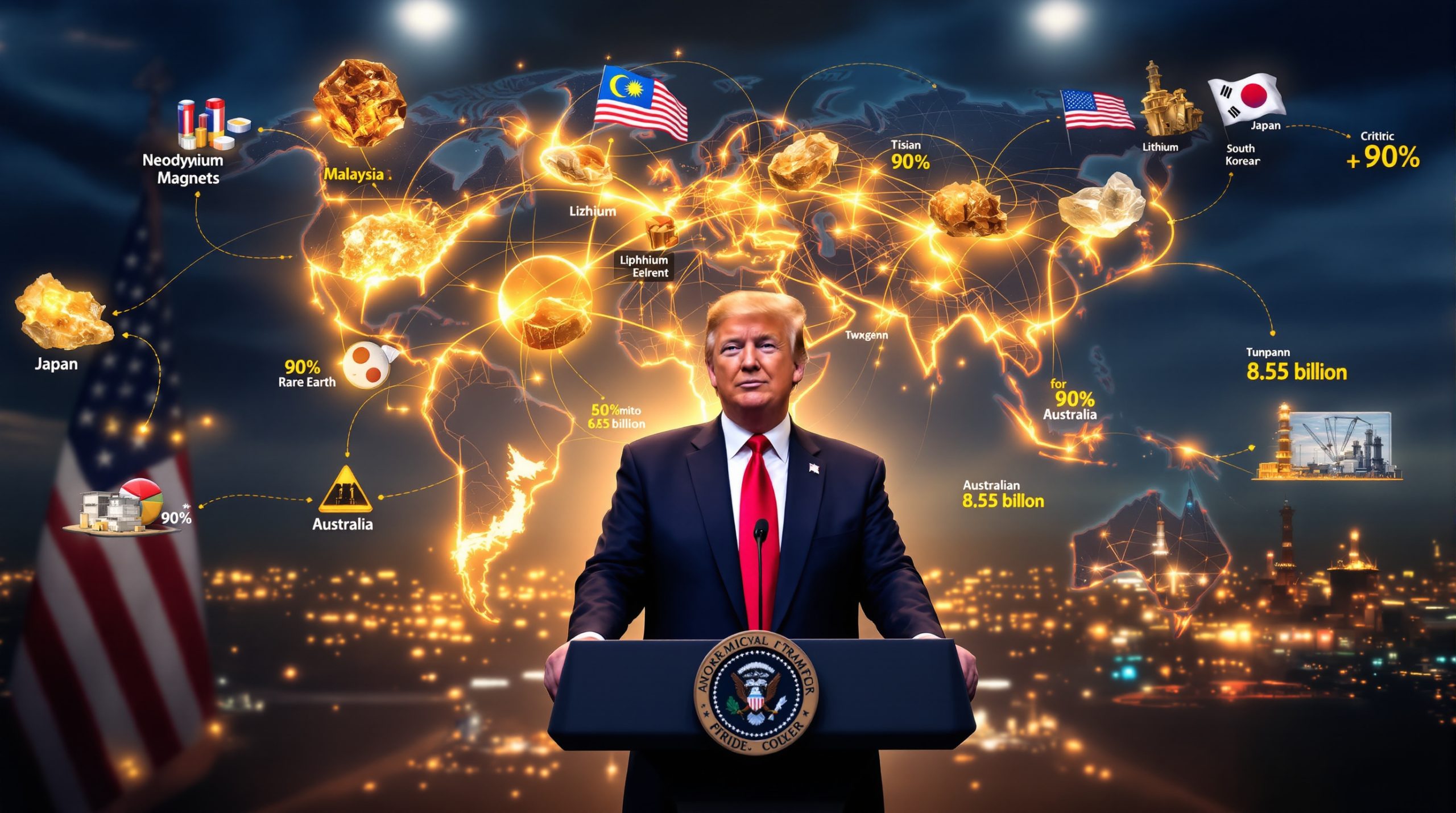Why Are Hong Kong Investors Flocking to Gold in 2025?
The Dramatic Shift in Portfolio Allocation
In a remarkable transformation of investment patterns, Hong Kong's affluent investors have nearly tripled their allocation to gold and precious metals over the past year. According to the latest HSBC survey, investors with US$100,000-$2 million in investible assets have increased their precious metals allocation from a modest 4% to a substantial 11% between mid-2024 and mid-2025.
This dramatic shift reflects a fundamental reassessment of portfolio strategies among Hong Kong's wealthy. The speed of reallocation is particularly noteworthy when compared to historical trends, where precious metals typically represented just 3-5% of diversified portfolios over the past decade.
Mainland Chinese investors have demonstrated an even stronger preference for gold, raising their allocations from 7% to 15% during the same period. This 8-percentage point increase represents the largest year-over-year shift toward any single asset class in Chinese investment portfolios since tracking began in 2018.
"The velocity of portfolio reallocation toward gold in Asia is unprecedented. Hong Kong's 7-point surge reflects deep structural anxiety about dollar hegemony and regional stability," notes Wong Mei-ling, senior precious metals analyst at the World Gold Council.
Global wealthy investors are following similar patterns, with data showing a 6-percentage point increase to 11% allocation worldwide. This convergence of investment behavior across different regions underscores gold's renewed status as a universal safe-haven asset.
Current Gold Market Performance
The market performance of gold in 2025 has vindicated these strategic shifts. Gold is currently trading at US$3,356.61 per ounce as of early July 2025, representing a remarkable 28% price increase year-to-date. This dramatic appreciation follows gold's historic breakthrough above the US$3,000 barrier in January 2025, which shattered previous resistance levels.
Gold reached all-time highs of US$3,500 per ounce in April 2025, following a series of geopolitical developments that triggered widespread market uncertainty. The precious metal has maintained most of these gains despite intermittent profit-taking, demonstrating unusual price resilience compared to previous bull markets.
The current price represents a 65% increase from 2023's average trading level of approximately $2,035 per ounce, making this one of the strongest two-year performance periods in gold's modern trading history.
Investment-grade physical gold products in Hong Kong now command premiums of 2-3% above spot prices, up from the typical 1-1.5% seen in previous years, reflecting heightened local demand and supply constraints.
What's Driving the Gold Investment Surge in Hong Kong?
Economic Uncertainty Factors
Multiple economic factors have converged to drive Hong Kong investors toward gold in unprecedented numbers. Inflation concerns remain paramount, with Hong Kong's Consumer Price Index reaching 3.8% in Q2 2025, exceeding government projections and eroding purchasing power.
Real interest rates (nominal rates minus inflation) have remained negative throughout 2024-2025, despite several rounds of monetary tightening. This environment historically favors gold as an inflation hedge, which thrives when fiat currencies lose purchasing power and fixed-income investments offer negative real returns.
"When real yields collapse and tariffs bite, gold's negative correlation to equities makes it the only reliable hedge for high-net-worth individuals," explains Dr. Chen Wei-ping, senior wealth strategist at Credit Suisse Hong Kong.
Currency fluctuation risks have intensified concerns, particularly given Hong Kong's unique position with its USD-pegged currency. The Hong Kong Monetary Authority has intervened twelve times in 2025 to maintain the peg within its trading band, consuming nearly US$8.5 billion in foreign reserves and raising questions about long-term sustainability.
Gold's performance during market stress has been particularly noteworthy. During the May 2025 market correction, when the Hang Seng Index dropped 12.6%, gold prices simultaneously rose 5.3%, demonstrating its negative correlation to equity markets during crisis periods.
Geopolitical Catalysts
The impact of US "Liberation Day" tariffs has been a principal driver of gold's ascent. President Trump's implementation of sweeping 25% tariffs on approximately $3 trillion of imports from multiple countries in February 2025 triggered immediate market turbulence and a flight to safe-haven assets.
The tariffs' disruptive effect on global supply chains has been especially pronounced in Asia, where manufacturing networks remain deeply integrated across national boundaries. Hong Kong, as a major financial hub and trade facilitator, has experienced heightened sensitivity to these disruptions.
Trade tensions have created unprecedented economic unpredictability, with revised GDP forecasts for Hong Kong downgraded from 3.2% to 1.8% for 2025. This uncertainty has accelerated the movement toward non-correlated assets like gold.
Regional political developments have further amplified investor anxiety, with territorial disputes in the South China Sea and Taiwan Strait contributing to a general sense of geopolitical fragility. These tensions have coincided with heightened capital outflows from certain emerging Asian markets, with gold serving as a beneficiary of this reallocated capital.
"Geopolitical instability has triggered a fundamental reassessment of risk across asset classes," notes Financial Secretary Michael Wong. "The strength of gold reflects both traditional safe-haven dynamics and modern portfolio hedging strategies."
The growing preference for non-sovereign assets during diplomatic uncertainties represents a significant shift in investor psychology. Unlike government bonds or currencies, gold's value is not directly tied to any single nation's policy decisions or creditworthiness, enhancing its appeal during periods of international tension.
How Does Hong Kong's Gold Investment Compare Globally?
Regional Investment Patterns
Hong Kong's 11% allocation to gold and precious metals now matches the global average, representing a significant convergence with international trends. This alignment reflects Hong Kong's unique position as both a Chinese cultural center with traditional affinity for gold and a global financial hub responsive to international investment patterns.
Mainland China's higher 15% allocation suggests stronger regional preference for precious metals, driven by both cultural factors and strategic diversification away from USD-denominated assets. The Chinese government has actively encouraged household gold ownership through various channels, including simplified access through major banks and certified retailers.
Singapore, another major Asian financial hub, shows a slightly lower allocation at 9.7% according to UOB Asset Management's 2025 Wealth Report. This difference likely reflects Singapore's historically stronger trust in sovereign wealth instruments and greater portfolio diversification into international equities.
Tokyo investors maintain the lowest regional allocation at approximately 7.3%, according to Bank of Japan data, consistent with Japan's decades-long deflationary environment and cultural preference for cash holdings.
Cultural factors significantly influence precious metals investment across East Asia. In Hong Kong and mainland China, gold maintains important cultural significance in wedding traditions, with 24-karat gold jewelry serving both ornamental and investment purposes. The "four pieces of gold" (四金) tradition in Chinese weddings has evolved to include investment-grade bars and coins alongside traditional jewelry.
"Asian gold demand combines modern portfolio theory with deeply-rooted cultural values," explains Dr. Samantha Li, cultural economist at Hong Kong University. "This dual foundation creates remarkable resilience in demand patterns even when pricing appears elevated by historical standards."
Central Bank Gold Purchasing Trends
Institutional purchasing has provided strong support for gold prices throughout 2025. According to the World Gold Council, central banks added 20 tonnes to global reserves in May 2025 alone, continuing a multi-year trend of official sector accumulation.
Kazakhstan National Bank has been particularly active, adding 7 tonnes to reserves in a single month. This continuation of Kazakhstan's strategic diversification away from dollar assets began in 2021 and has accelerated in response to geopolitical tensions.
The People's Bank of China purchased 3 tonnes in May 2025, bringing its year-to-date acquisitions to 17 tonnes. This relatively measured pace belies China's longer-term strategy of gradually reducing its exposure to USD-denominated assets while avoiding market disruption.
Central bank purchasing has provided a psychological floor for gold prices, with institutional buying frequently emerging during price dips. This pattern has reduced market volatility and provided retail investors with greater confidence in maintaining their positions.
Hong Kong's role as a regional gold trading hub has benefited from these institutional flows, with the Chinese Gold & Silver Exchange Society reporting a 43% year-over-year increase in transaction volume during the first half of 2025.
What Forms of Gold Investment Are Popular in Hong Kong?
Physical Gold Products
Physical gold remains the preferred option for many Hong Kong investors, with traditional products experiencing renewed popularity. Gold bars ranging from 10 grams to 1 kilogram are particularly sought after, with premiums for 1-kilogram bars averaging 2.3% above spot prices at major dealers like Chow Tai Fook and Hang Seng Bank.
"Physical gold premiums at Chow Tai Fook jumped 8.5% in Q2 2025 as affluent clients opted for 1kg bars over jewelry," reports Thomas Chan, precious metals division director at the renowned Hong Kong retailer. This shift toward investment-grade products and away from ornamental pieces highlights investors' focus on wealth preservation rather than consumption.
Premium differences between various physical gold products have widened in 2025, with smaller denominations commanding significantly higher markups. One-ounce gold coins typically carry premiums of 5-7% above spot, while 10-gram bars may cost 8-10% over spot prices, reflecting higher fabrication costs and greater retail demand.
Storage considerations have become increasingly important for physical gold investors in Hong Kong. Traditional bank safe deposit boxes now command monthly rates between HK$1,500-6,000 depending on size and location, with many institutions reporting waitlists exceeding six months for new rentals.
Private vault facilities have emerged as popular alternatives, with companies like Malca-Amit and Brink's offering specialized precious metals storage with comprehensive insurance coverage. These facilities typically charge 0.5-0.8% of asset value annually, with minimum fees starting around HK$12,000 per year.
Insurance and security aspects have gained prominence, with specialized policies covering theft, damage, and transportation risks now available through providers like AXA and AIG. These policies typically cost 0.3-0.5% of the insured value annually but provide protection beyond standard homeowner's coverage limits.
Paper Gold and ETFs
Gold ETFs have gained significant popularity among Hong Kong investors seeking precious metals exposure without physical storage concerns. The Value Gold ETF (3081.HK), Hong Kong's largest gold ETF, has seen assets under management surge by 67% in the first half of 2025 to reach HK$12.7 billion.
Trading volume trends on Hong Kong exchanges reveal growing investor engagement with gold-related securities. Daily average turnover for gold ETFs has increased from approximately HK$120 million in 2024 to over HK$350 million in 2025, reflecting both higher prices and greater participation.
The comparison between physical ownership and paper gold investments hinges on several factors. Physical gold offers complete ownership without counterparty risk but requires secure storage and typically involves higher transaction costs. ETFs provide liquidity, divisibility, and simplicity but introduce custody risk and ongoing management fees.
Fee structures for gold ETFs in Hong Kong have become more competitive, with expense ratios ranging from 0.4% to 0.65% annually. This represents a significant reduction from the 0.8-1% fees common five years ago, reflecting greater competition among issuers.
Digital gold platforms have emerged as a hybrid alternative, with services like Ant Group's Au99 and HSBC's Gold Token allowing investors to purchase gold at near-spot prices with storage handled by the provider. These platforms typically charge annual custody fees of 0.2-0.3% with no minimum investment requirements.
How Can Investors Optimize Their Gold Allocation?
Portfolio Diversification Strategies
Optimal percentage allocation to gold varies significantly based on risk tolerance and overall financial objectives. Conservative investors typically maintain 5-10% allocations, while more aggressive gold proponents might allocate up to 25% during periods of economic uncertainty.
"A 10-15% gold allocation provides meaningful diversification benefits without overexposing portfolios to a single asset class," advises Jennifer Yuen, chartered financial analyst and senior portfolio manager at HSBC Private Banking. "This range balances risk mitigation with long-term growth objectives."
Correlation benefits with other asset classes provide gold's primary diversification advantage. During the market turbulence of early 2025, gold maintained a negative correlation of -0.42 with the Hang Seng Index and -0.38 with the S&P 500, demonstrating its effectiveness as a portfolio stabilizer during equity market stress.
Rebalancing considerations become particularly important during price volatility. Financial advisors typically recommend trimming gold positions when they exceed target allocations by more than 20% (e.g., when a 10% target reaches 12% of portfolio value) and adding during significant price corrections.
Dollar-cost averaging approaches have proven effective for gold acquisition, particularly given the metal's price volatility. Monthly or quarterly purchases of fixed HK$ amounts helps investors avoid the psychological challenge of timing market entry and typically results in lower average acquisition costs over time.
"The discipline of systematic gold accumulation removes emotional decision-making from the investment process," notes Dr. Raymond Tsang, behavioral finance researcher at Chinese University of Hong Kong. "This psychological benefit often translates into superior long-term returns compared to attempted market timing."
Tax and Regulatory Considerations
Hong Kong's tax treatment of gold investments remains highly favorable compared to most jurisdictions. Physical gold transactions are exempt from both Goods and Services Tax and capital gains tax, maintaining Hong Kong's status as one of Asia's most tax-efficient precious metals markets.
The regulatory framework for precious metals trading in Hong Kong is governed primarily by the Chinese Gold & Silver Exchange Society, established in 1910 and now operating under the oversight of the Securities and Futures Commission. This dual-layer regulatory structure provides investor protections while maintaining market efficiency.
Cross-border implications for mainland investors have become increasingly complex. Chinese citizens are technically limited to bringing 50 grams of gold across the border without declaration, though enforcement varies. Larger quantities require approval from the State Administration of Foreign Exchange and may incur import duties of approximately 10%.
Reporting requirements for substantial holdings differ significantly between jurisdictions. While Hong Kong maintains minimal reporting for physical gold ownership, international initiatives like the Common Reporting Standard may require disclosure of offshore gold holdings exceeding certain thresholds, particularly when held through financial institutions.
What Are Expert Predictions for Gold in 2025-2026?
Price Forecast Analysis
Technical indicators for gold price movement suggest continued strength through late 2025, with most analysts identifying $3,200 as a key support level and $3,800 as the next major resistance target. The weekly relative strength index (RSI) remains below overbought territory despite the significant price appreciation, suggesting further upside potential.
Supply-demand dynamics affecting future pricing remain favorable for gold investors. Mine production has increased only marginally (approximately 1.2% year-over-year) despite the price rally, constrained by declining ore grades and increasing regulatory hurdles in key producing regions.
Production cost floors supporting price levels have risen substantially, with the all-in sustaining cost (AISC) for major gold miners now averaging $1,350-1,450 per ounce. This rising cost structure provides fundamental support for gold prices even during market corrections.
"The industry's cost curve has shifted upward by nearly 25% over five years," explains Michael Wong, mining analyst at CLSA. "Higher energy costs, environmental compliance expenses, and declining ore grades have permanently altered the economics of gold production."
Seasonal patterns in gold trading suggest potential strength in late Q3 and early Q4 2025, coinciding with traditional wedding season demand in India and festival-related purchasing in China. This seasonal strength typically adds 3-5% to prices between August and October.
The gold price forecast 2025 remains bullish, with most analysts projecting continued strength through year-end. The consensus target range of $3,600-3,900 reflects expectations of persistent inflation concerns and ongoing geopolitical tensions supporting gold investment in Hong Kong.
Risk Assessment
Potential policy changes that could impact gold prices include central bank monetary tightening and regulatory shifts. Federal Reserve policy remains particularly influential, with each 25-basis-point rate increase historically correlating with 2-4% gold price declines in the short term.
Interest rate correlation with gold performance has weakened somewhat in the current environment, with the traditional inverse relationship disrupted by persistent inflation concerns. Gold has maintained strength despite nominal rate increases, as real (inflation-adjusted) rates have remained negative.
Currency strength factors affecting precious metals include the US Dollar Index (DXY), which maintains an inverse relationship with gold prices. Any significant strengthening of the dollar would likely create headwinds for gold, while dollar weakness typically supports higher prices.
Alternative haven assets competing with gold include Bitcoin and certain defensive equities, though these have shown less reliability during recent market stress events. Bitcoin's correlation with technology stocks has increased to 0.65 in 2025, diminishing its effectiveness as a portfolio diversifier compared to gold's negative correlation with equities.
"The digital gold narrative has failed to materialize during genuine market crises," observes Dr. Helena Chang, digital asset specialist at Hong Kong Polytechnic University. "When markets experienced peak volatility in Q1 2025, Bitcoin fell 28% while physical gold appreciated 15%."
The [gold market
Ready to Get Ahead of the Next Major Mineral Discovery?
Discover why significant ASX mineral discoveries can lead to exceptional returns by exploring Discovery Alert's proprietary Discovery IQ model, which transforms complex geological data into actionable investment insights. Visit the dedicated discoveries page today to begin your 30-day free trial and position yourself ahead of the market.




